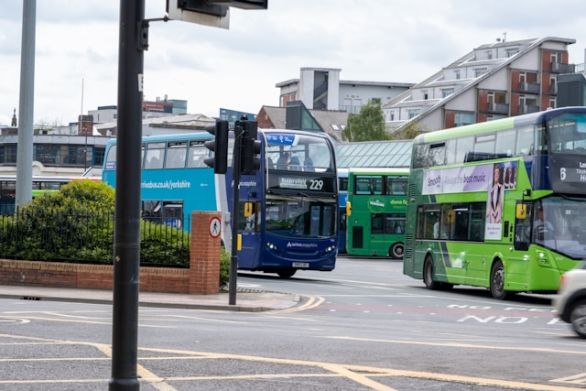The news is positive for those organisations that are lucky enough to obtain the funding for delivering planned projects, and, well, less positive news for areas seeking to develop existing and new major scheme business cases, as well as deliver their next Local Transport Plan programmes. And as with all cuts, the size of the impact depends on where you start from. Remember that Transport already took a £700m or so cut to this year’s budget in June. All the Spending Review cuts are on top of this.
What was also clear was that the details of the Transport settlement were still being finalised right up to the last minute and we’re told that ministers fought hard to get the settlement they did. This means some things didn’t pan out as telegraphed. For example, in his pre-Spending Review speech to the Conservative Party conference Philip Hammond said there would be a radical reduction in the number of grants to local authorities from around 30 to two – a formula-based grant and the Local Sustainable Transport Fund. Of course, we now know he was close but not exact as we now have four funds, two formula-based and two bidding:
- Integrated Transport Block (small transport schemes, primarily capital, and less than £5m, historically to deliver the Local Transport Plan programmes)
- Highways Maintenance Block (capital funding provided to plan and manage the local road network)
- Local Major Schemes (larger, road and rail improvement projects)
- Local Sustainable Transport Fund (new fund to deliver low cost, high value sustainable travel programmes)
If you also take into account the June cuts, next financial year (2011-12) the Integrated Transport Block at £300m will be half the original 2010-11 baseline. On top of that, the DfT will soon publish what it intends to do following its recent consultation on rebasing the ITB formula. If this goes ahead as set out in the summer, then some authorities could lose up to a further 10% or so, while others have the blow softened somewhat with a relative gain.
We’re led to understand that there was a serious prospect that the ITB could have gone altogether. It was only the strength of the work on the scale of the benefits from small scale investments that saved the day. So a 50% cut overall will have a big impact on local transport authorities but it could have been worse! Watch out for further announcements on ITB before the recess.
Strip out the extra money that’s gone into maintenance this year following last winter’s mini ice age then in outturn prices the maintenance block declines by a little over 3% per annum over the Spending Review period. Of course, inflation will mean that the real terms decrease will be bigger than this, but the message from DfT is clear: maintain the network in its current condition and offset the block reduction through efficiency savings
The detailed allocations for both the Integrated Transport and Maintenance blocks will be emerging soon, alongside the local government settlement. Headline figures from the Spending Review suggest that major scheme spending will actually increase against the 2010-11 baseline. However, the published baseline figure includes in-year cuts and the impacts of the DfT’s freeze on approvals. A more accurate picture from the ‘planned’ expenditure in 2010-11 shows that the reduction is 17%.
It’s with majors that it’s probably easiest to identify that there will be winners and losers. Sixty-six majors have been divided into three pools: the supported pool (10 schemes), the development pool (22 schemes) and a pre-qualification scheme (34 schemes). The key fact is that together these schemes are asking the DfT for £1.7bn but there is only £900m available. On top of this there will be no new starts until 2012-13. There will be casualties.
And what will make a successful scheme? Transport Minister Norman Baker has made it clear that he’s looking for schemes that help economic growth and reduce carbon emissions. On top of that, anything that reduces the call on DfT funding will be welcomed, which means value engineering and increased local contributions.
Rural and smaller authorities are worried that they will be the losers. While rural schemes may have a good BCR do they have the desired impact on the ‘real’ economy? Can smaller authorities significantly reduce their call on DfT funds?
The Local Sustainable Transport Fund will lessen the hit for what we assume would be a select few successful bidders. Guidance is nearly finished – another announcement to watch out for. While we’ll have to wait and see the guidance before we know exactly what the DfT is looking for, we expect a focus on the short journey: how to get those five mile or less trips away from the car. So this points to walking, cycling, car clubs and car sharing and the whole gamut of smarter choices.
LSTF will be made up of capital and revenue funding from the DfT, but don’t think that bids need to reflect the same split as the Department’s money. And think of the way majors are funded as the model for getting the money – the Department will want to see a link between their money and what is being bought by the local transport authority. Similarly, and more obviously, those areas with a strong reputation and which link their LSTF bids to a high quality LTP will be in stronger position to convince the Department they should receive funding.
No doubt all this will frustrate the Local Government Association which has so far powerfully argued for ‘deringfencing’ of grants and other freedoms for local government as part of a wholesale change in the central-local government relationship. It is also worth noting that around £10m from the LSTF will be ring-fenced for Bikeability (cycle training).
A further ray of light comes with the Regional Growth Fund – £1.4bn over three years, of which the DfT contributes a third. The new fund centres on creating economic growth and building relationships with private sector partners to assist in making the transition from the public sector to private sector funding. Potential bidders will need to carefully consider how their transport proposals impact on the economy and growth. Arguably, those areas with approved Local Enterprise Partnerships (LEPs) will be at the front queue battling for the RGF money, as will those bids that lever in private funding.
Perhaps the most significant message from the Spending Review is that LTAs will have to consider the ways that they can raise their own funding contribution as well as lever in third party funding. This has been an emphasis of central government for several years and the message was certainly reaffirmed in the latest guidance on major schemes, as well as LTPs.
With reducing funding levels available and an oversubscribed list of major schemes, close consideration will have to be given to options including increasing developer funding, borrowing, workplace parking levies, and other charging regimes.
We also await primary legislation or perhaps pilot schemes for Tax Increment Financing (borrowing against future business rates revenues).
Here we’ve focused on the Spending Review from the local authority perspective, but to close, let’s consider the Highways Agency (HA), rail and London. Look behind the flurry of Good News announcements on HA schemes and it is clear that the HA’s capital budget has been hit hard. Some significant schemes like the upgrade of the A1 in North Yorkshire that would finally connect the North East to the national motorway network have been cancelled and others have been sent back to the drawing board with no prospect of funding until well after 2015. Those schemes that are going ahead are focused on the busiest and most congested parts of the motorway network, primarily using Managed Motorways, the Department no doubt considering that these are the greatest value to the economy.
Rail seems to have come out of the spending reviewed relatively unscathed (unless you’re a passenger who will face RPI+3 fare increases for three years from 2012), but we take this to be the calm before the storm. The five year rail funding cycle has insulated rail somewhat. Armed with McNulty’s report, expect the Department to be gunning for significant savings from 2014.
And to London: capital spend has held up and work on the Tube and Crossrail progresses, but revenue is hit hard. There are more bus miles in London than anywhere else: the 20% reduction to BSOG is going to hurt. London boroughs also await clarification on how much of TfL’s pain they will be expected to share.











